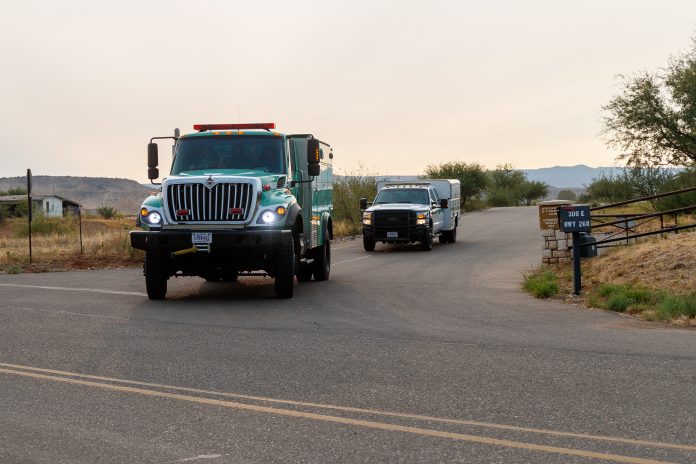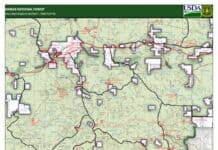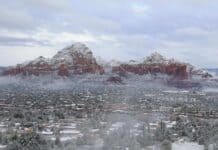
Last week, residents of Sedona and Verde Valley noticed a thickening of high-altitude smoke in our skies that lingered several days through the weekend.
Normally when this happens, we reporters check with our local fire agencies about wildfires and check InciWeb, a regional intergovernmental website run by the National Wildfire Coordinating Group that tracks wildfires throughout the western United States.
The NWCG was established by the U.S. Departments of Agriculture and Interior in 1976 after serious wildfires in 1970 underscored the need for better coordination between firefighting agencies that could transcend jurisdictional boundaries.
InciWeb is perhaps the NWCG’s most well-known public tool, a go-to resource for U.S. Forest Service, state, county and local fire agencies to list daily, sometimes hourly updates about wildfires in their areas with photos, maps, charts and updates from incident commanders and public information officers.
InciWeb, at inciweb.nwcg.gov, is the resource we often cite to show our readers where these fires are actively burning.
The federal website airnow.gov merges this fire data with air particulate measurements from the U.S. Environmental Protection Agency, National Oceanic and Atmospheric Administration, National Park Service, NASA, Centers for Disease Control and Prevention, and tribal, state and local air quality agencies across the country.
Airnow.gov shows air quality from thousands of testing sites as well as showing where plumes of smoke are coming from.
There are more in-depth federal, state and specialized private sector websites providing more detailed information, but these two are general catchalls when news agencies need a quick overview for their readers.
However, the data on these websites and from local and state agencies revealed the smoke in our skies last week through today is not simply from a brushfire south of Camp Verde, nor a blaze in the hills west of Prescott or from a lightning-initiated fire on the Mogollon Rim east of Payson.
Rather, the smoke was streaming in from more than 35 wildfires burning on federal lands in California and Oregon.
The fires are coupled with a perfect storm of weather: Strong Santa Ana winds over Nevada and Utah are pushing south and southwest over the wildfires burning in the Sierra Nevada mountains, greatly intensifying them, while the jetstream approaching California sweeps up the Pacific Coast into British Columbia, then back over the eastern Rockies — trapping much of the smoke over California, Nevada, Utah and Arizona while southern winds push the smoke that has drifted into Southern California east in Arizona.
Here in Northern Arizona, we are getting smoke from both this southern drift and the northern cyclonic rotation.
In past years, an occasional wildfire on the California-Arizona border would push smoke into our area, but never before have so many fires burning so intensely across so much of a neighboring state pushed this much smoke into our skies.
Perhaps you’ve seen the photos of California cities bathed in orange glow like a scene out of “Blade Runner: 2049,” or heard news reports that 1 out of 10 Oregon residents are under evacuation orders. This fire season is arguably one of the worst we have experienced.
Two summers of “nonsoon” monsoons mean our terrain is far dryer than normal and more likely to burn. However, we have been relatively lucky in Northern Arizona this year, smoke excluded. Fewer monsoon thunderstorms also mean fewer lightning strikes, but human error could always lead to the next conflagration. That said, climate change and global warming will likely bring more drastic weather changes to our region in the fire seasons to come and we need to prepare, adapt, respond and alter behavior to protect our natural environment.
Whether we adapt is up to us. Mother Nature never plays favorites — in our museums are fossils from thousands of other species that did not change.
Christopher Fox Graham
Managing Editor





















